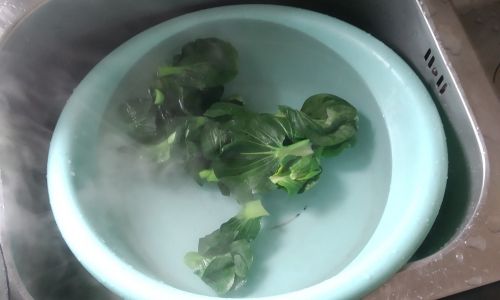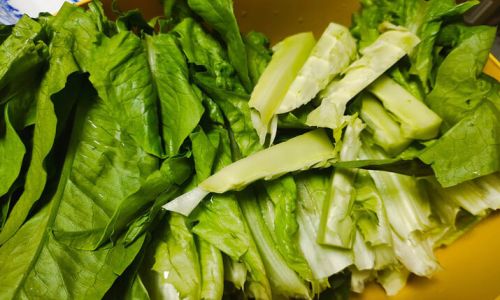Introduction
Leafy greens, often referred to as vegetables with predominantly green, edible leaves, are an essential part of a balanced diet. They are rich in vitamins, minerals, antioxidants, and dietary fiber, contributing significantly to overall health and well-being. From spinach and kale to arugula and lettuce, these versatile greens can be incorporated into a myriad of dishes, from salads and smoothies to stir-fries and soups. However, maintaining their freshness and nutritional value can be challenging, especially if not stored correctly. Improper storage can lead to rapid spoilage, nutrient loss, and the development of harmful bacteria. This article delves into the intricacies of how to properly store leafy greens, ensuring they retain their nutritional integrity, texture, and flavor for as long as possible.
Understanding the Basics of Leafy Green Storage
Before diving into specific storage techniques, it’s crucial to understand the fundamental principles that govern how leafy greens should be handled. Leafy greens are highly perishable due to their high water content and delicate cell structure. This makes them susceptible to dehydration, oxidation, and microbial contamination. Therefore, the primary goals of storing leafy greens are to minimize moisture loss, slow down oxidation processes, and prevent the growth of harmful microorganisms.
Selection and Preparation

The first step in ensuring long-lasting freshness begins at the grocery store or farmers’ market. When selecting leafy greens, look for vibrant, deep green leaves with no signs of wilting, yellowing, or browning. Avoid greens that are slimy or have an unpleasant odor, as these are indicators of spoilage.
Once you’ve brought your greens home, prepare them for storage immediately. This involves removing any damaged or decaying leaves, as well as the stems if they are tough and unedible. Washing should be done just before use, as pre-washing can accelerate spoilage by introducing moisture and promoting bacterial growth. However, if you must wash them before storing, dry them thoroughly with a clean cloth or paper towels to remove excess water.
Temperature Control
Temperature plays a pivotal role in preserving the quality of leafy greens. Ideally, these vegetables should be stored in a refrigerator set to a temperature between 32°F and 40°F (0°C and 4°C). This range slows down cellular respiration and enzymatic activity, thereby extending shelf life.
It’s important to note that not all parts of the refrigerator are equally suitable for storing leafy greens. The crisper drawers, designed specifically for fruits and vegetables, provide the most optimal environment. These drawers often have humidity controls, allowing you to adjust the moisture level according to the needs of different produce. For leafy greens, set the humidity control to high to maintain an optimal level of moisture.
Packaging and Air Circulation
Proper packaging is crucial for maintaining the freshness of leafy greens. The goal is to create an environment that balances moisture retention and gas exchange. Airtight containers can lead to excessive condensation, promoting mold growth, while uncovered greens will dry out quickly.
One effective method is to use paper towels or a clean, dry cloth to line the storage container or bag. This absorbs excess moisture without restricting air circulation. Alternatively, you can use reusable, breathable produce bags designed for vegetables. These bags allow for adequate gas exchange while protecting the greens from dehydration and contamination.

Avoid using plastic bags without ventilation holes, as they trap moisture and ethylene gas, accelerating spoilage. If you must use plastic, punch a few small holes in the bag to facilitate air circulation.
Modifying Atmosphere Packaging (MAP)
For those who are serious about extending the shelf life of their leafy greens, considering investing in modified atmosphere packaging (MAP) might be worthwhile. MAP involves sealing produce in a container or bag with a controlled atmosphere of gases, typically a low-oxygen, high-carbon dioxide environment. This slows down respiration and microbial growth, significantly extending the shelf life of leafy greens.
While MAP is commonly used in commercial settings, some home appliances and storage solutions now offer this technology. If you frequently buy large quantities of leafy greens or are passionate about reducing food waste, exploring these options could be beneficial.
Monitoring and Rotation
Even with the best storage practices, it’s essential to monitor your leafy greens regularly. Check for signs of spoilage, such as discoloration, sliminess, or an off odor, and discard any affected portions immediately to prevent the spread of contamination.
Additionally, practice first-in, first-out (FIFO) rotation. This means using the oldest greens first, ensuring that newer purchases don’t sit in storage for too long. By maintaining an organized storage system, you can maximize the freshness and nutritional value of your leafy greens.
Freezing Leafy Greens (for Long-Term Preservation)

While fresh consumption is ideal for maximizing the nutritional benefits of leafy greens, freezing can be a viable option for long-term preservation. Freezing slows down enzymatic activity and microbial growth to a halt, effectively extending shelf life for months.
To freeze leafy greens, wash and dry them thoroughly. Blanching, a process of briefly immersing the greens in boiling water followed by an ice water bath, can help retain color and texture. However, some greens, like spinach and kale, can be frozen without blanching. Once prepared, spread the greens in a single layer on a baking sheet and place it in the freezer until the greens are frozen solid. Transfer the frozen greens to airtight containers or freezer bags, removing as much air as possible to prevent freezer burn.
Conclusion
Proper storage of leafy greens is a multi-faceted process that involves careful selection, preparation, temperature control, packaging, and regular monitoring. By adhering to these principles, you can significantly extend the shelf life of your leafy greens, ensuring they remain fresh, nutritious, and delicious. Remember, the key to successful storage lies in balancing moisture retention, gas exchange, and temperature control. With these strategies in place, you can enjoy the health benefits of leafy greens for longer, reducing food waste and enhancing your overall diet.
As consumers become increasingly conscious of their food choices and the environmental impact of food waste, mastering the art of storing leafy greens becomes not just a culinary skill but a responsible practice. By prioritizing freshness and sustainability, we can all contribute to a healthier, more sustainable food system.





0 comments